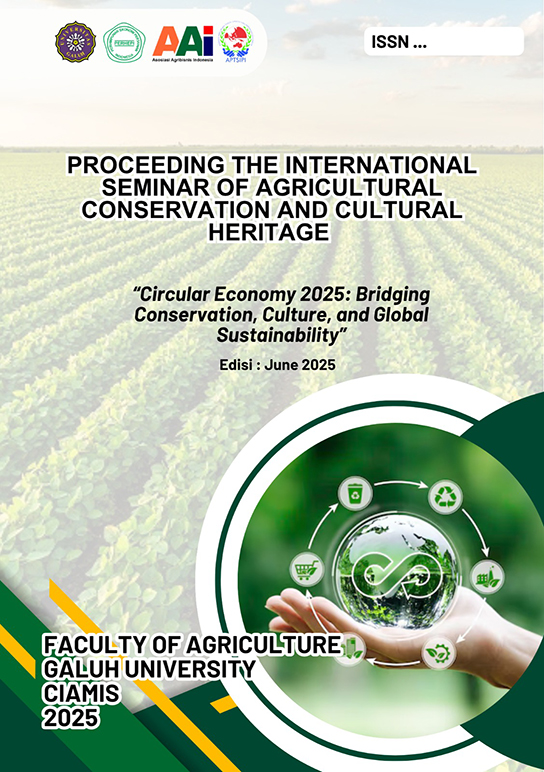COMPARISON OF HYBRID MAIZE PRICE FEASIBILITY BY MARKETING CHANNEL
Keywords:
price viability; Farmer's share; hybrid maize;Abstract
Price viability is essential for improving farmers' welfare. This study aims to analyze the feasibility of the prices received by hybrid maize farmers in the Jampang Tengah Subdistrict of Sukabumi District. The method employed is descriptive quantitative analysis, utilizing the Farmer's share value indicator, which represents the percentage of the price received by farmers compared to the consumer selling price. The results indicated that in channel I (farmer-consumer), the price received was IDR 5,300, resulting in a Farmer's share of 100%. In channel II (farmer-major trader-consumer), the price received by farmers was IDR 4,500, resulting in a Farmer's share of 85.71%. In channel III (farmer-collecting trader-large trader-consumer), the price received by farmers was IDR 4,000, leading to a Farmer's share of 76.92%. Based on these results, the price received by farmers was deemed feasible because the Farmer's share value exceeded 40% across all distribution channels.
References
1. S. A. Salelua And S. Maryam, J. Agribisnis Dan Komun. Pertan. (Journal Agribus. Agric. Commun. 1, 47 (2018)
2. Kementerian Pertanian, Pus. Data Dan Sist. Inf. Pertan. Kementrian Pertan. 1 (2020)
3. Badan Pusat Statistik Kabupaten Sukabumi, 6 (2024)
4. A. Hasanuddin, M. Said, And M. Ruslan, Indones. J. Bus. Manag. 3, 1 (2021)
5. S. Sehgal And M. Kumar, South Asian J. Soc. Stud. Econ. 16, 16 (2022)
6. E. H. Frenco Elwadinata, Dompak Napitupulu, Khazanah Intelekt. 9, 64 (2025)
7. F. Rashid, Buku Metode Penelitian Fathor Rasyid (2022)
8. Sugiyono, Metode Penelitian Kuantitatif, Kualitatif Dan R & D (2013)
9. U. K. Nurulita Imansari, Buku Ajar Metodologi Penelitian Untuk Pendidikan Kejuruan (2023)
10. Y. S. Siregar, M. Darwis, R. Baroroh, And W. Andriyani, J. Ilm. Kampus Mengajar 69 (2022)
11. S. P. Pangemanan, I. D. R. Lumenta, And T. Maliangkay, Jambura J. Anim. Sci. 5, 82 (2023)
12. M. Yanuar, B. Sakti, M. Harisudin, And P. Mandasari, Agrista 7, 163 (2019)
13. I. W. Sudana, J. Pendidik. Ekon. 11, 637 (2019)
14. O. Feni, At-Tawassuth J. Ekon. Islam Viii, 1 (2023)
15. R. Yunita, S. Syahril, And H. Noviar, Ekombis J. Fak. Ekon. 7, 90 (2021)


